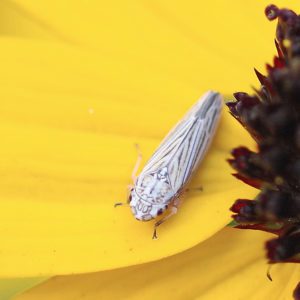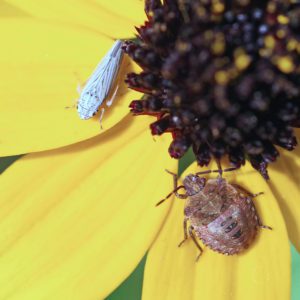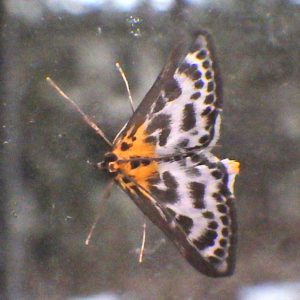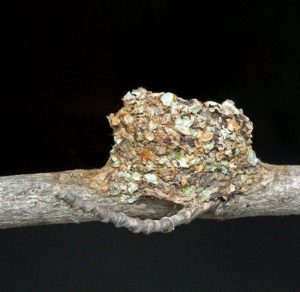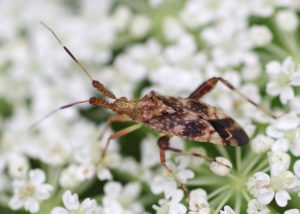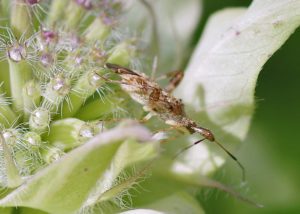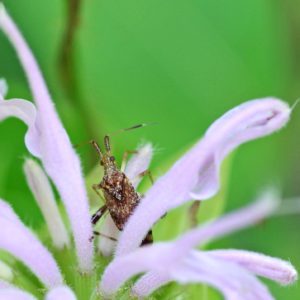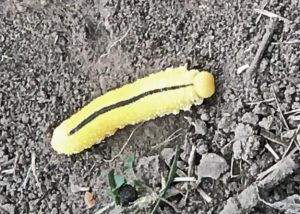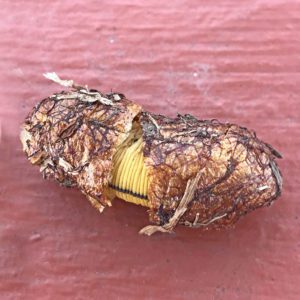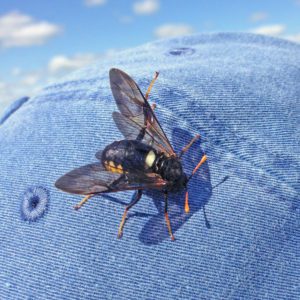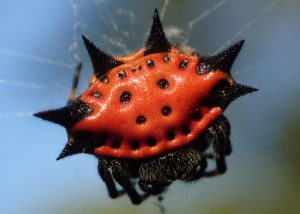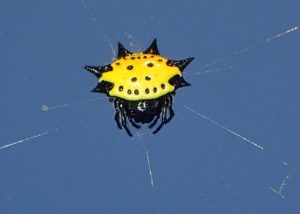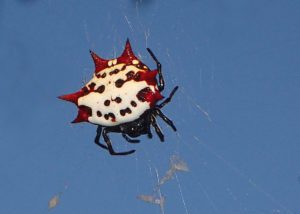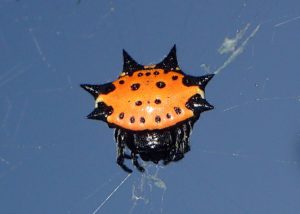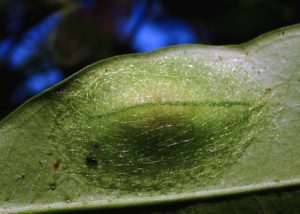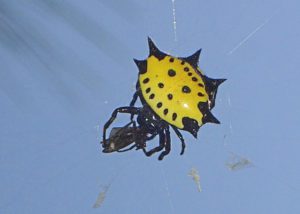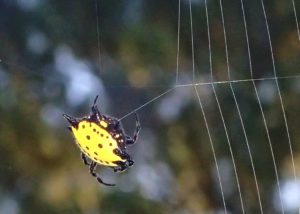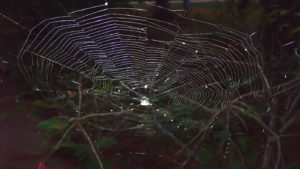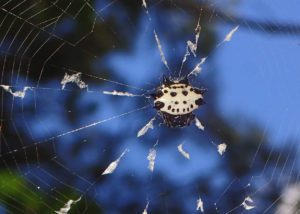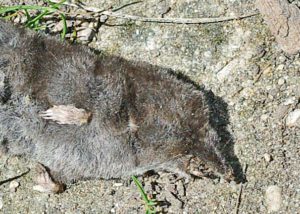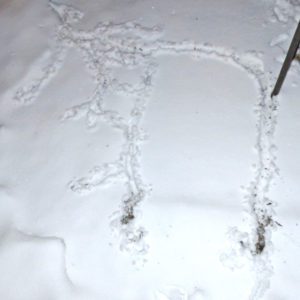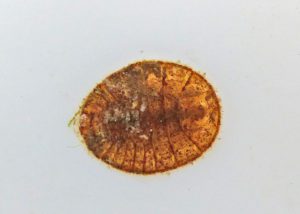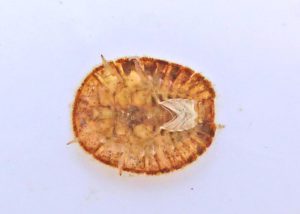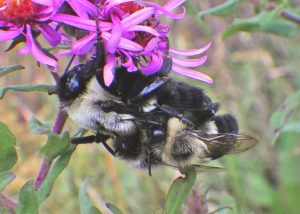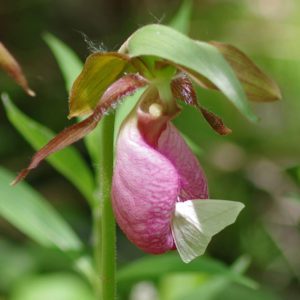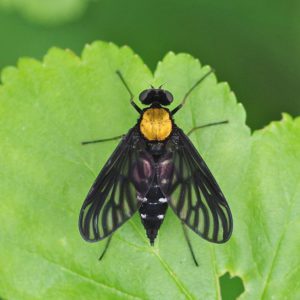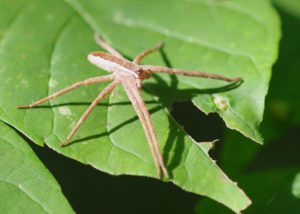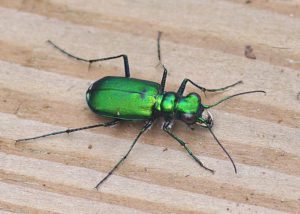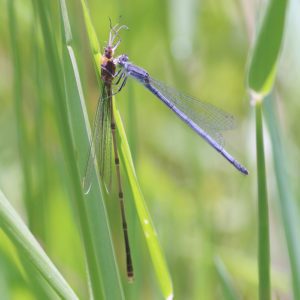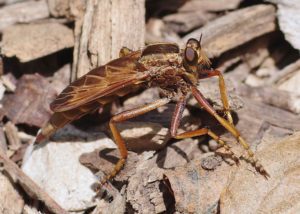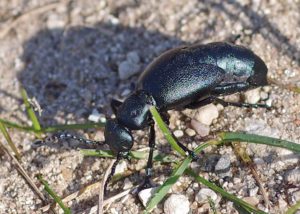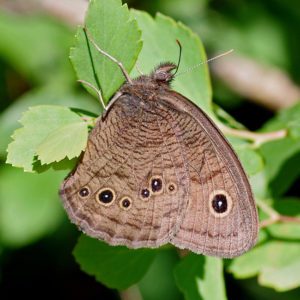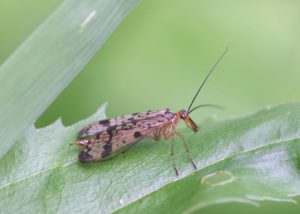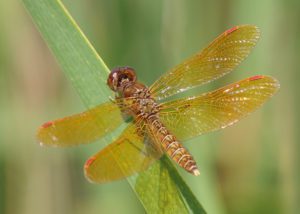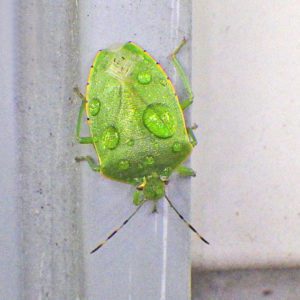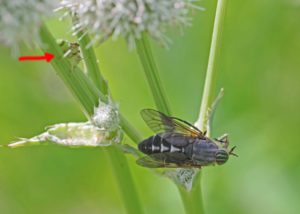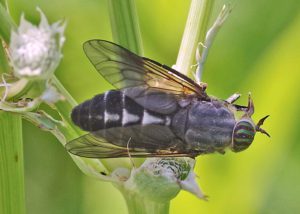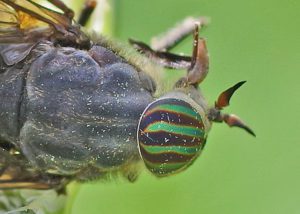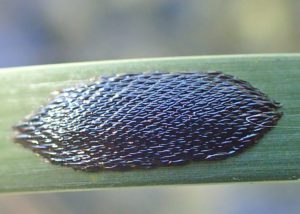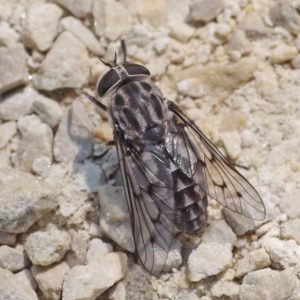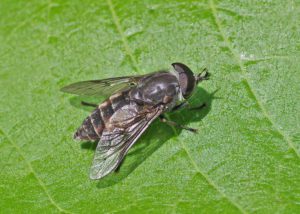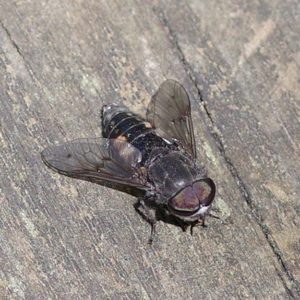Greetings, BugFans,
Although this cute little leafhopper has several names – Neokolla hieroglyphica and, formerly Graphocephala gothica (and see “Extra credit” below), it doesn’t have a common name. It’s in the leafhopper family Cicadellidae (sik-ah-DELL-ih-dee says bugguide.net), a group that the BugLady used to call “pop-bugs” in her youth because they landed on her jeans in the fields, and when she touched their rear ends, they popped away. There are about 3,000 species of these little bugs in North America and about 22,000 described species elsewhere, but experts estimate that there may be three times that number still awaiting discovery (it’s always refreshing to reaffirm that we don’t know everything yet).
You can tell leafhoppers from similarly-sized spittlebugs by the row of spines on the hind legs of the leafhoppers https://bugguide.net/node/view/1752304/bgimage.
Leafhoppers are small, usually less than 1/3 of an inch, and yet their numbers include a few migratory species that recolonize the north in spring and retreat in fall. They’re in every habitat where you find vascular plants, and they feed on plant sap that they access by poking a hole in a stem with their sharp mouthparts. They are among the insects that release excess food from their rear end in the form of a sugar solution called honeydew. Honeydew is an important carbohydrate that is eaten by other insects, but leafhoppers are not farmed by ants like some other honeydew producers are. Some leafhoppers are generalist feeders and some prefer only a short list of hosts.
Many are drab, but there are some pretty spiffy leafhoppers out there: https://bugguide.net/node/view/55317/bgpage, https://bugguide.net/node/view/688689/bgimage, https://bugguide.net/node/view/368756/bgpage, https://bugguide.net/node/view/1262101/bgpage,
Female leafhoppers insert eggs into a plant, and depending on geography and season, the eggs hatch in a month to a year. They have incomplete metamorphosis – the nymphs hatch out looking not-unlike their parents. They eat and molt and grow, adding a few body parts and lengthening their wings, achieving adulthood in their final molt rather than via a resting stage in a pupal case.
Neokolla hieroglyphica can be found in grassy areas across the northern US and southern Canada (and south, in a few locales in California and the Southeast). Bugguide.net calls it “The only pink leafhopper east of the Rockies” but adds that the color can be variable: (https://bugguide.net/node/view/1724691/bgimage) https://bugguide.net/node/view/520961/bgimage, https://bugguide.net/node/view/70866/bgimage, and https://bugguide.net/node/view/344994/bgimage. An “M/omega”-shaped mark on the top of the head is diagnostic https://bugguide.net/node/view/734068/bgimage.
The translucent-ish nymphs look metallic https://bugguide.net/node/view/71461/bgimage, https://bugguide.net/node/view/1350037/bgimage (what would we do without bugguide.net?).
Neokolla hieroglyphica is fond of alfalfa, and it may be a vector of a virus called alfalfa witches broom. The wonderful Illinois Wildflowers (https://www.illinoiswildflowers.info/) associates them with goldenrods, and another source connects them with willows.
Fun Leafhopper Fact # 1: Neokolla is in the subfamily Cicadellinae, called the Sharpshooters because when they release honeydew, you can hear a faint sound like a teeny popgun.
Fun Leafhopper Fact # 2: leafhoppers sing, but we can’t hear them. Structures on the abdomen allow them to make sound.
Fun Leafhopper Fact # 3: leafhoppers produce “brochosomes,” waxy substances made of proteins and fats that they distribute on their body to waterproof it. Sometimes it’s smeared on unevenly and forms blotches https://bugguide.net/node/view/1370252/bgpage, and some species put some on their egg scars to prevent dehydration. Check Wikipedia’s article about brochosomes, complete with pictures (https://en.wikipedia.org/wiki/Brochosome).
Leafhopper Fun Fact #4: you can buy one from BioQuip Biological Supply Company for $5.00.
Extra Credit:
For extra credit, the BugLady is including this write-up from the North Carolina biodiversity project about the classification of Neokolla hieroglyphica (these people seriously want to get it right!): “G. gothica and G hieroglyphica are somewhat of a taxonomic mess and can be quite confusing: while many experts treat these two species as belonging in Graphocephala, some place them in the genus Neokolla. Both species were initially described as Tettigonia gothica and T. hieroglyphica [BugLady note: Tettigonia is a European genus of katydids, which is a whole different discussion]. When they were elevated to Neokolla, both were synonymized under Neokolla hieroglyphica (in particular, T. gothica was N. h. atra and T. hieroglyphica was N. h. hieroglyphica). Young (1977), who revised Cicadellini comprehensively, treated Neokolla as a junior synonym of Graphocephala, something that has been followed by other leafhopper workers. Neokolla was later resurrected in a paper based on an interpretation of Say’s original description of the type species of Neokolla (hieroglyphica Say) that was contrary to those of prior authors (plus, Say’s description could apply to either hieroglyphica or gothica, as evident by both being placed under the same species within Neokolla). Neokolla species in general are quite variable in coloration, with some of these colors getting named forms, which some have then elevated to species status. As a result of this taxonomic disagreement, Graphocephala gothica is what some are currently calling Neokolla hieroglyphica, and Graphocephala hieroglyphica appears to be what some are calling Neokolla uhleri (though uhleri, considered for some time as a variety of hieroglyphica, was depicted in older literature as having quite different head markings). For now we will go with what takes precedence, following Young, but as you can see this taxonomic reshuffling has resulted in quite a bit of confusion and complexity.
And the stink bug nymph is pretty cute, too.
The BugLady

